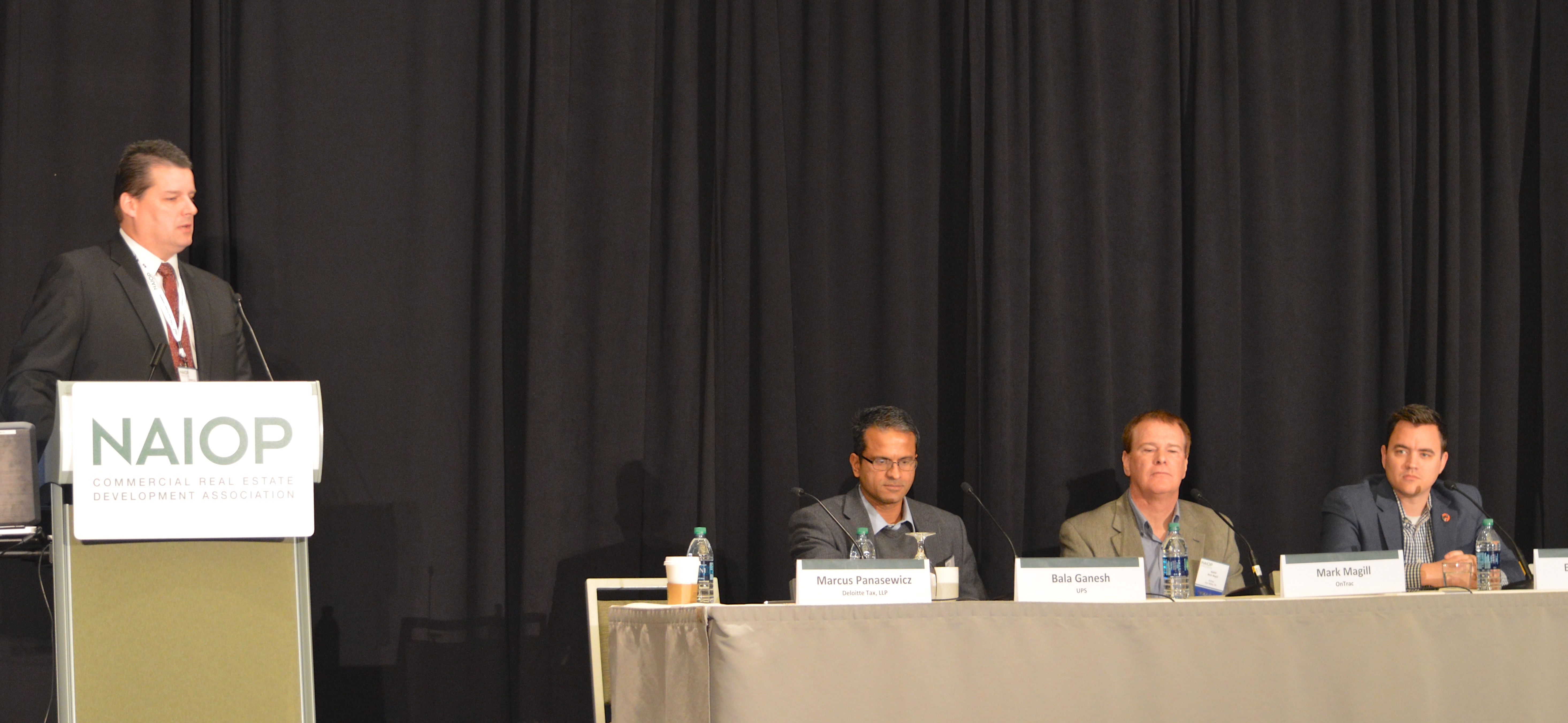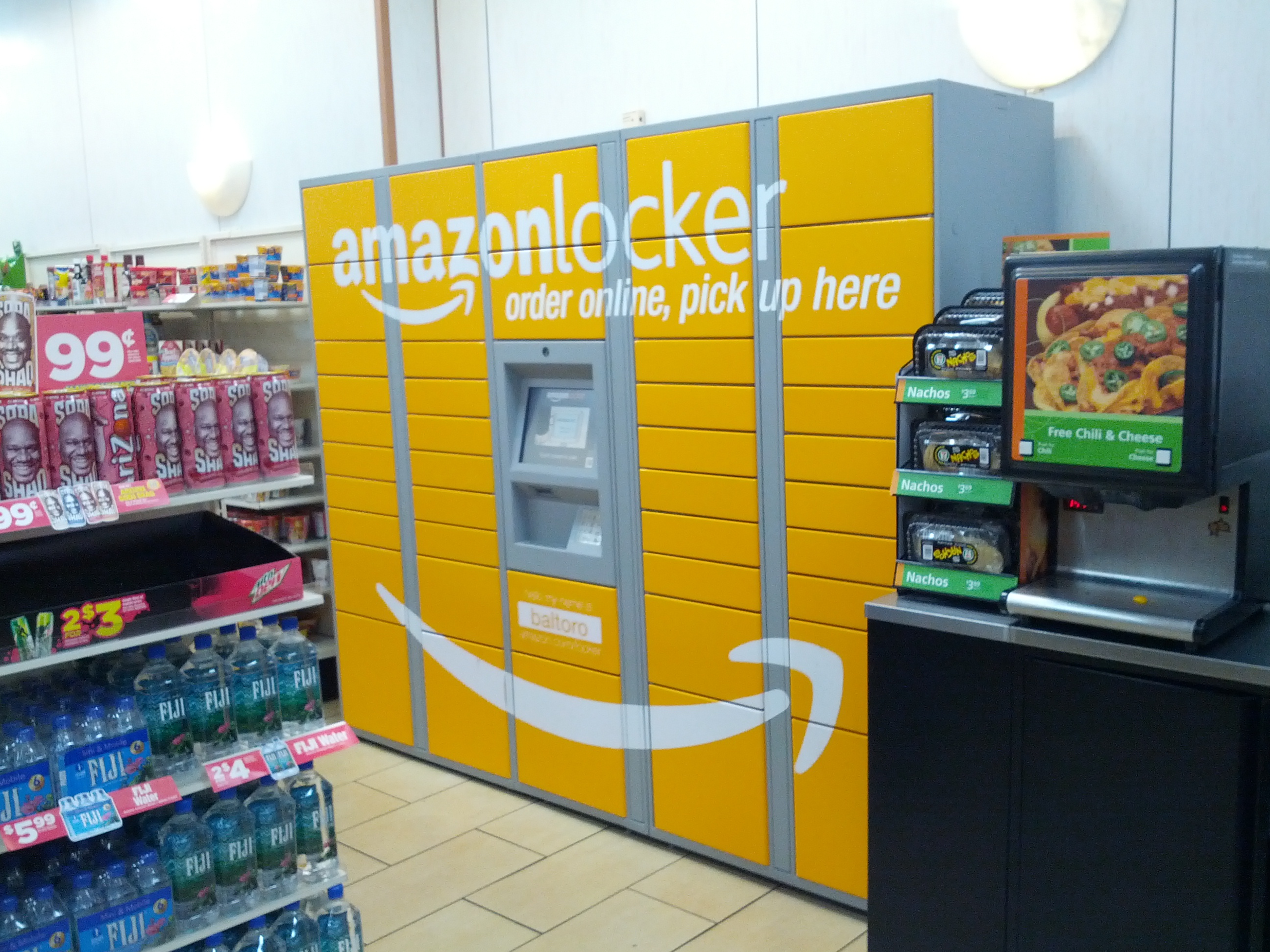E.Con Special Series—Part Two: The Trillion-Dollar Industry
Part two of contributing editor Erica Rascon's series of reports on e-commerce, based on discussions that took place as part of NAIOP’s E.Con '15 conference.
 Contributing Editor Erica Rascon presents a two-part series of reports on e-commerce based on discussions that took place as part of NAIOP’s E.Con conference in March.
Contributing Editor Erica Rascon presents a two-part series of reports on e-commerce based on discussions that took place as part of NAIOP’s E.Con conference in March.
Though e-commerce has grown into a trillion-dollar industry, successful, efficient last-mile delivery continues to be a formidable hurdle for most retailers. The challenge of getting products from distribution centers to consumers’ doorsteps is changing the face of e-commerce more than any other factor.
For major U.S. players like Amazon and WalMart, today’s distribution centers require more than 1 million square feet of space, 36- to 40-foot clearance, and an expansion pad of 1/7500 for shipping and receiving. In the past, such large footprints placed industrial complexes beyond the suburbs of major cities where the space is plentiful and more affordable. That is about to change.
Smaller, Centralized DCs
Many retailers select distribution center sites that have access to 95 percent of the customer base within two or three days. This proximity is no longer adequate, as consumers want their goods faster and with lower shipping costs. Panelists on “The Last Mile Delivery” at NAIOP’s E-CON ’15 conference concurred that smaller, infill properties closer to consumers could decrease same-day and next-day shipping times and costs. Such properties would need comparatively small facilities of only 300,000 to 800,000 square feet. The costs for these sites would be much higher, limiting the number of retailers that could build additional centers—but some can, and will.
 “We’re hearing (from some developers) that some of those e-commerce retailers who land in great big buildings—maybe a strategy of two or three major regional DCs—are starting to scramble. Maybe we should be filling in the gaps to properly fill the delivery strategy,” speculated Ben Conwell, former director of North America real estate for Amazon.com.
“We’re hearing (from some developers) that some of those e-commerce retailers who land in great big buildings—maybe a strategy of two or three major regional DCs—are starting to scramble. Maybe we should be filling in the gaps to properly fill the delivery strategy,” speculated Ben Conwell, former director of North America real estate for Amazon.com.
Retailers that invest in “mini-DCs” can offer faster shipping and more adequate in-store pickup with lower costs to consumers. They will have a notable advantage over the competition, which could force other retailers to reconsider their distribution strategies, as well.
“When Bob (Zelis) from WalMart was speaking of his 5,000 storefronts, in my mind, I’m thinking ‘That’s 5,000 last-mile depots,’ ” Conwell continued. “Some of them might be 180,000 square feet; some are in small neighborhoods. That’s a tremendous competitive advantage. That’s a moat that is nearly impossible for others to cross.”
Acquiring these smaller, centralized locations will not occur overnight, nor will the behemoth distribution centers beyond the suburbs close anytime soon. In the meantime, logistics leaders are exploring other solutions in an effort to decrease the costs and increase the efficiency of last-mile delivery.
Small Business to the Rescue
While same-day shipping is desirable for consumers, less than 3 percent will pay the current fees.
Mark Magill, vice president of business development at OnTrac, noted that “same day is still rare. Out of a million packages, less than 50 packages are shipped same day. Consumers are still willing to wait rather than pay a lot more for same day. Sure, Millennials want same day, but they don’t yet have the buying power to support it.”
More popular is the ability to schedule the delivery date and time, with 63 percent of consumers wanting this option.
Yet e-retailers are not pursuing this, either. Instead, local businesses are filling the niche. Companies such as Doorman of San Francisco and LiLoE in Washington D.C., act as a third-party delivery system for consumers. The companies receive packages on behalf of consumers, then deliver them to the home or business at the customer’s preferred time. The service minimizes the risk of theft and weather damage.
Small businesses are also offering on-site storage for e-retailers, similar to a P.O. box. Amazon Locker is one program that provides consumers with a pickup location for goods ordered online. This system has gained acclaim in Europe and may forge a market in the U.S. in coming years.
Once the popularity of such services grows, more e-retailers will likely collaborate directly with these small businesses in order to offer greater convenience.
Increase in Same-Day Store Pickup
Another option preferred by 22 percent of consumers is to shop online and pick up somewhere else, such as their local store. In the absence of storage lockers, this is less of an option for true e-retailers. But in-store pickup has become popular among such retailers as WalMart, Target and Best Buy, which began as brick-and-mortar stores.
In some ways, in-store pickup is ideal for retailers. Store representatives pull an item from the shelf and hold it for the customer until they arrive. This method requires no additional distribution infrastructure and very few additional employees. A problem arises only when the product is not available.
Retailers are still exploring what works best for same-day, in-store pickup. Best Buy has a fleet of couriers that travel between stores, noted Everett Steele, CEO of Kanga, but that method can be costly. Some retailers are piggybacking off of UPS services, since the courier makes stops to several locations throughout the day. “It’s still difficult and no one is really doing it well; it’s expensive, but it’s something consumers want and they haven’t figured out how to accommodate it,” he observed. Furthermore, this option relies on the space and availability of UPS, which may be out of the retailers’ control.
Another challenge is that same-day (much less same-hour) in-store pickup may be restricted to the suburbs. Traffic congestion makes the option nearly impossible in the core of major cities.
Fulfilling out-of-stock items for in-store pickup is too new for a list of recommended best practices. Still, it is a delivery alternative that has piqued consumer interest and holds a promising alternative to building new distribution centers within city limits.
The ideal solution for last-mile delivery continues to evade researchers, however. “The question becomes, how close to the consumer can we push that product? It impacts, to our narrow view, the world of e-commerce and the world of retail, and in the broader focus, the world of delivery in general,” said Magill. “Getting something from Duane Reade in Upper West Side Manhattan to a consumer is really easy. There is a Duane Reade on every block and a bunch of guys on bikes already there. It’s easy; it’s low cost. Replicating that on-demand, same-day logistics in Atlanta just doesn’t work. Getting something from Buckhead to Downtown Atlanta for under $10—it’s not going to happen, probably ever. It’s a huge, complex challenge with unpredictable and hard-to-measure costs for everybody involved in the supply chain.”
Part One of the series addressed “Automated E-Commerce: Are We Ready?“







You must be logged in to post a comment.